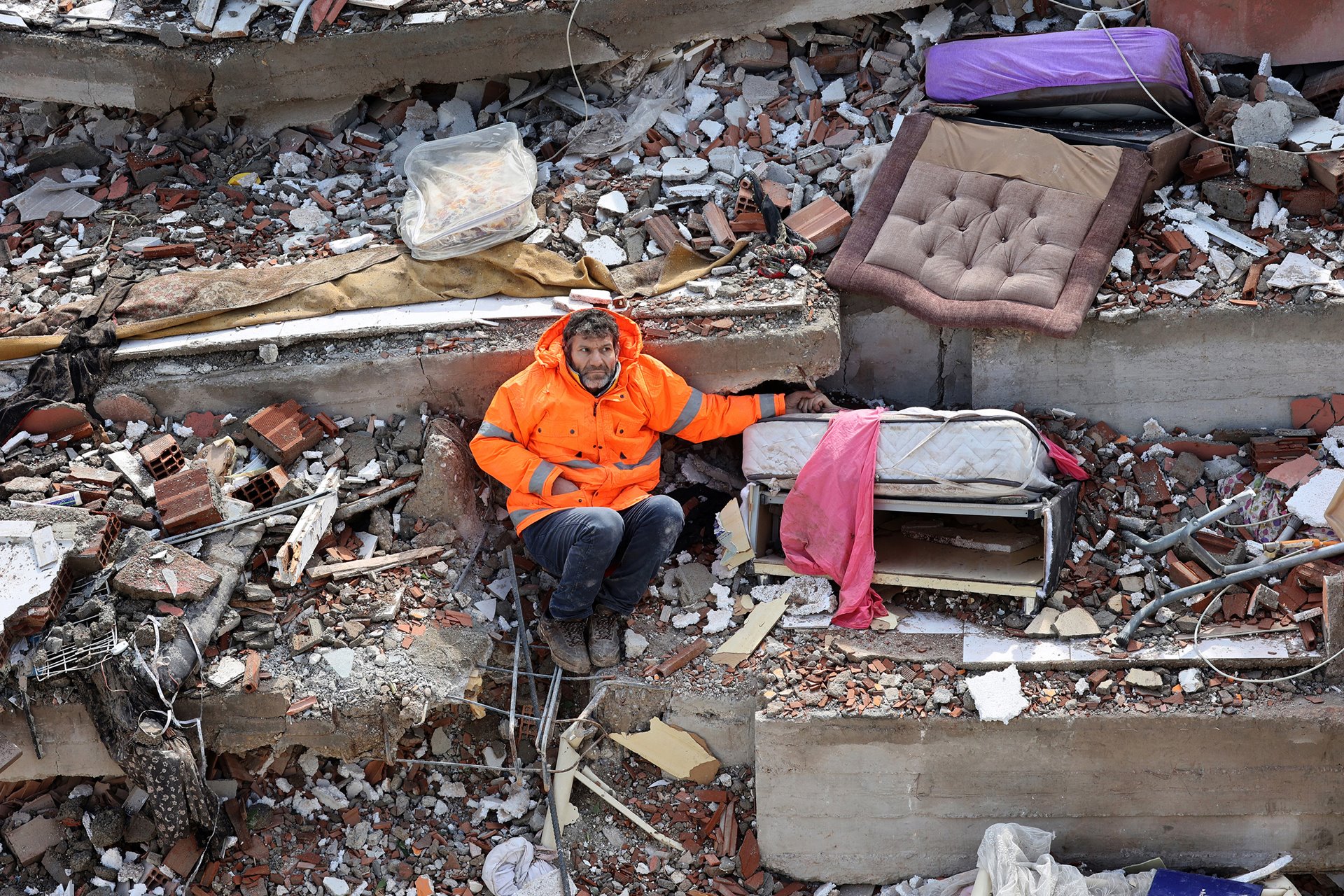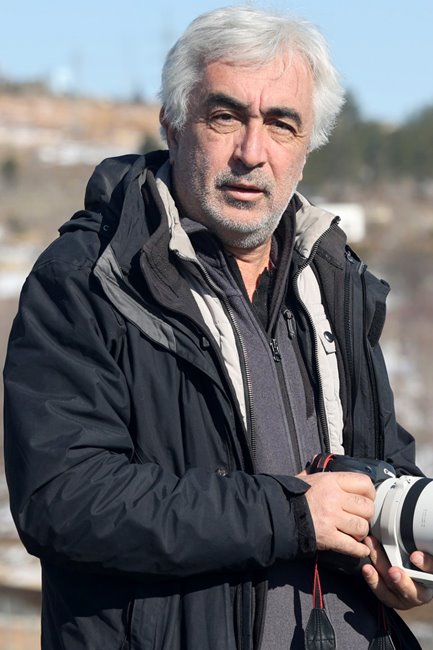Mesut Hançer holds the hand of his 15-year-old daughter Irmak, killed while asleep when her grandmother’s home collapsed during an earthquake in Kahramanmaraş, southern Turkey.
Hançer called home from his bakery when the earthquake struck, learning that his wife and three adult children were safe in their one-storey house. However, no one could reach Irmak, the youngest, who had stayed the night with her grandmother. Rushing to his mother’s building, he found that his daughter had died when the eight-storey block collapsed. The photographer came across him before help had arrived, and while residents were trying their best to free buried loved ones. Hançer was not moving despite the rain and the freezing cold. “Take pictures of my child,” he said, calling the photographer over. This picture made the front pages of hundreds of newspapers and social media platforms across the world, becoming a symbol of the tragedy.
The 7.8 magnitude earthquake struck the Turkish provinces of Kahramanmaraş and Gaziantep, near the Syrian border, at 4:17 a.m. on 6 February, followed by a series of 6+ magnitude aftershocks and a second earthquake nine hours later. Both Turkey and Syria felt the impact of the quake, which killed more than 55,000 people and displaced 3.3 million. The World Bank reports that the earthquake damaged or destroyed in excess of 800,000 buildings.
Factors in the high death toll included the early start time of the quake, which struck when many people were asleep, together with poorly, sometimes illegally constructed buildings. The Turkish city of Erzin in Hatay, for example, where a long series of city mayors have enforced strict building regulations, saw no buildings collapse and no deaths, even though it was close to the epicenter. Neighboring towns suffered catastrophic damage. In the aftermath of the earthquake, Turkish authorities arrested over 100 housing developers who were believed to have cut corners in the construction of buildings. In northern Syria, infrastructure already weakened by war damage was a further consideration, and the ongoing conflict makes prospects of rebuilding dim.
Are you a photographer and/or passionate about press freedom? Sign up for our newsletter to stay updated on our annual contest and to hear about exhibitions near you.

